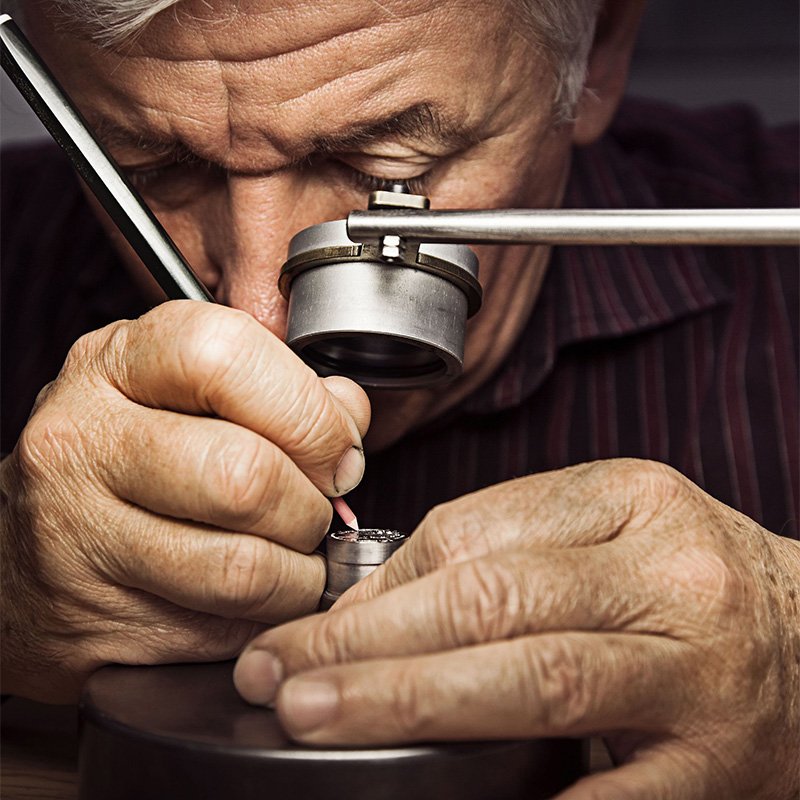Bars are precious metals such as gold and silver mostly cast in an oblong shape. Considered the first metallic currency, they became a means of payment some 4,000 years ago.
A blister is a type of packaging that both protects and displays coins. Immediately after minting, coins are shrink-wrapped in film to protect them from fingerprints and other potential damage. Information about the coin is printed on a second layer of paperboard packing.
Made for investment purposes, Bullion coins have a high precious metal content and are traded at the daily gold, silver, etc., price. Their face value is less than the value of the precious metal they contain. Vienna Philharmonics in gold and silver are popular investment coins all over the world.
The Ducat is a gold coin that was first minted in 13th-century Venice, from where it spread all over Europe, arriving in Austria at the beginning of the 16th century. Today, Ducat Restrikes are both a reliable investment and popular present.
Age, manufacturing method and rarity are not the only decisive factors in a coin’s value. Its condition, defined worldwide in coin grades, is vital too.
German | English | Coin grade |
sge | vg | very good condition, but also very considerable traces of wear |
s | f | fine condition, considerable traces of wear |
ss | vf | very fine condition, moderate traces of wear |
vz | xf | extremely fine condition, possibly very light traces of wear |
prfr | unc | Uncirculated, no traces of wear |
st | unc | Uncirculated, no traces of wear |
pp | proof | Proof, absolutely uncirculated, minted with specially polished dies, often shrink-wrapped in protective film |
The fineness of a coin defines its precious metal content. The Vienna Philharmonic in gold, for example, has a fineness of 999.9 and is thus made of pure gold.
Fine weight defines only the weight of a coin’s precious metal content. In addition to precious metal, a coin can also contain copper, as in the case of the Ducat. Fine weight plus the weight of a coin’s non-precious metal content combine to make its total weight.
The Gulden is a coin originating from Germany, where it was minted from the 14th century in gold and later in silver. During the 19th century the Gulden was the official currency in Austria.
Restrikes of historic golden Ducats, Gulden and Crowns are no longer legal tender. They are traded according to the daily gold price.
Carats define the fineness of gold in comparison to other materials in 24 parts: pure gold being 24 carats; 1 carat consisting of other substances in 23 parts. Gold is usually processed with silver and copper.
Invented in the 19th century for pressing coins and medals, the two lever press is characterised by high velocity and optimum power transmission.
An alloy consists of at least two metals and is defined by the proportion of each metal cast.
Nominal value defines the face value of a coin. In the case of circulation coins, face value corresponds to actual value, for example 1 euro. In the case of investment coins or collector coins, the actual value can be much higher than the minted face value.
As a ‘first strike’ – an early strike in a series struck from a new die – a coin of Special Uncirculated minting quality is designed to meet the most exacting standards. Such a high level of craftsmanship beautifully emphasizes the design of the coin, which is individually packed immediately after minting.
The procedure for producing coins in Proof quality is particularly elaborate, with dies and blanks being highly polished. Collector coins are those mainly minted to this standard at the Austrian Mint.
Ring striking guarantees that the metal blank of a coin is pressed into an even round shape. This kind of striking has been used since the beginning of the 19th century when it enabled edge lettering for the first time.
The Rocker press was a much smaller version of the roller press with facing semi-circular dies, and could be operated by one person.
An (Troy-) ounce or fine ounce is the international standard unit of weight for precious metals and equals 31.103 grams. Gold and silver prices are given in US dollars per fine ounce. The term originates from the Latin uncia (one twelfth of the whole). One uncial was the equivalent of one twelfth of a Roman pound.
The roller press was invented in Hall in the Tyrol in the second half of the 16th century. During its operation horses were used to move its two heavy iron rolls in order to roll the metal plate to the desired thickness of the coin before it was cut and minted.
